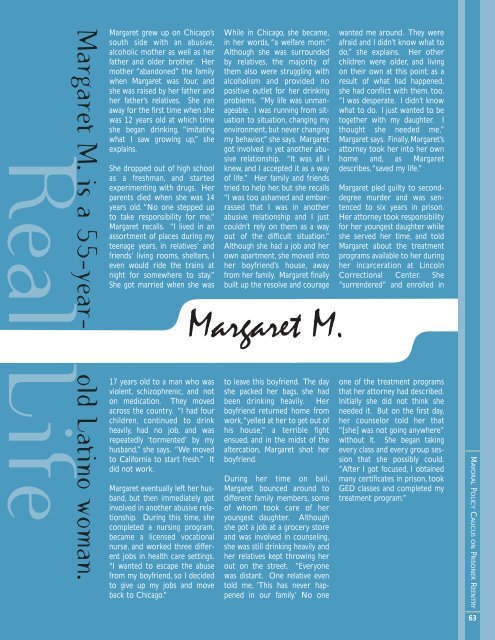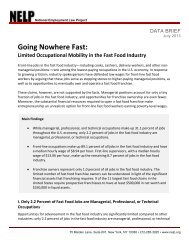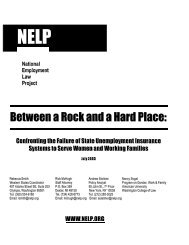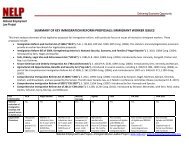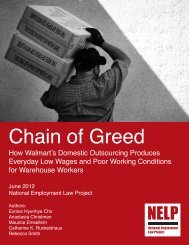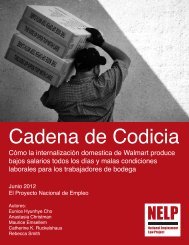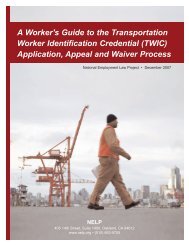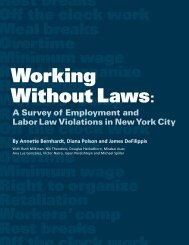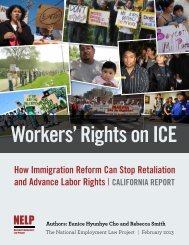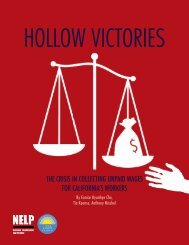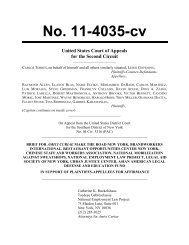Rebuilding Lives. Strengthening Communities.
Rebuilding Lives. Strengthening Communities.
Rebuilding Lives. Strengthening Communities.
Create successful ePaper yourself
Turn your PDF publications into a flip-book with our unique Google optimized e-Paper software.
Margaret M. is a 55-year- old Latino woman.<br />
Real Life<br />
Margaret grew up on Chicago’s<br />
south side with an abusive,<br />
alcoholic mother as well as her<br />
father and older brother. Her<br />
mother “abandoned” the family<br />
when Margaret was four, and<br />
she was raised by her father and<br />
her father’s relatives. She ran<br />
away for the first time when she<br />
was 12 years old at which time<br />
she began drinking, “imitating<br />
what I saw growing up,” she<br />
explains.<br />
She dropped out of high school<br />
as a freshman, and started<br />
experimenting with drugs. Her<br />
parents died when she was 14<br />
years old. “No one stepped up<br />
to take responsibility for me,”<br />
Margaret recalls. “I lived in an<br />
assortment of places during my<br />
teenage years, in relatives’ and<br />
friends’ living rooms, shelters, I<br />
even would ride the trains at<br />
night for somewhere to stay.”<br />
She got married when she was<br />
17 years old to a man who was<br />
violent, schizophrenic, and not<br />
on medication. They moved<br />
across the country. “I had four<br />
children, continued to drink<br />
heavily, had no job, and was<br />
repeatedly ‘tormented’ by my<br />
husband,” she says. “We moved<br />
to California to start fresh.” It<br />
did not work.<br />
Margaret eventually left her husband,<br />
but then immediately got<br />
involved in another abusive relationship.<br />
During this time, she<br />
completed a nursing program,<br />
became a licensed vocational<br />
nurse, and worked three different<br />
jobs in health care settings.<br />
“I wanted to escape the abuse<br />
from my boyfriend, so I decided<br />
to give up my jobs and move<br />
back to Chicago.”<br />
While in Chicago, she became,<br />
in her words, “a welfare mom.”<br />
Although she was surrounded<br />
by relatives, the majority of<br />
them also were struggling with<br />
alcoholism and provided no<br />
positive outlet for her drinking<br />
problems. “My life was unmanageable.<br />
I was running from situation<br />
to situation, changing my<br />
environment, but never changing<br />
my behavior,” she says. Margaret<br />
got involved in yet another abusive<br />
relationship. “It was all I<br />
knew, and I accepted it as a way<br />
of life.” Her family and friends<br />
tried to help her, but she recalls<br />
“I was too ashamed and embarrassed<br />
that I was in another<br />
abusive relationship and I just<br />
couldn’t rely on them as a way<br />
out of the difficult situation.”<br />
Although she had a job and her<br />
own apartment, she moved into<br />
her boyfriend’s house, away<br />
from her family. Margaret finally<br />
built up the resolve and courage<br />
Margaret M.<br />
to leave this boyfriend. The day<br />
she packed her bags, she had<br />
been drinking heavily. Her<br />
boyfriend returned home from<br />
work,“yelled at her to get out of<br />
his house,” a terrible fight<br />
ensued, and in the midst of the<br />
altercation, Margaret shot her<br />
boyfriend.<br />
During her time on bail,<br />
Margaret bounced around to<br />
different family members, some<br />
of whom took care of her<br />
youngest daughter. Although<br />
she got a job at a grocery store<br />
and was involved in counseling,<br />
she was still drinking heavily and<br />
her relatives kept throwing her<br />
out on the street. “Everyone<br />
was distant. One relative even<br />
told me, ‘This has never happened<br />
in our family.’ No one<br />
wanted me around. They were<br />
afraid and I didn’t know what to<br />
do,” she explains. Her other<br />
children were older, and living<br />
on their own at this point; as a<br />
result of what had happened,<br />
she had conflict with them, too.<br />
“I was desperate. I didn’t know<br />
what to do. I just wanted to be<br />
together with my daughter. I<br />
thought she needed me,”<br />
Margaret says. Finally, Margaret’s<br />
attorney took her into her own<br />
home and, as Margaret<br />
describes,“saved my life.”<br />
Margaret pled guilty to seconddegree<br />
murder and was sentenced<br />
to six years in prison.<br />
Her attorney took responsibility<br />
for her youngest daughter while<br />
she served her time, and told<br />
Margaret about the treatment<br />
programs available to her during<br />
her incarceration at Lincoln<br />
Correctional Center. She<br />
“surrendered” and enrolled in<br />
one of the treatment programs<br />
that her attorney had described.<br />
Initially she did not think she<br />
needed it. But on the first day,<br />
her counselor told her that<br />
“[she] was not going anywhere”<br />
without it. She began taking<br />
every class and every group session<br />
that she possibly could.<br />
“After I got focused, I obtained<br />
many certificates in prison, took<br />
GED classes and completed my<br />
treatment program.”<br />
MAYORAL POLICY CAUCUS ON PRISONER REENTRY<br />
63


